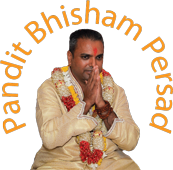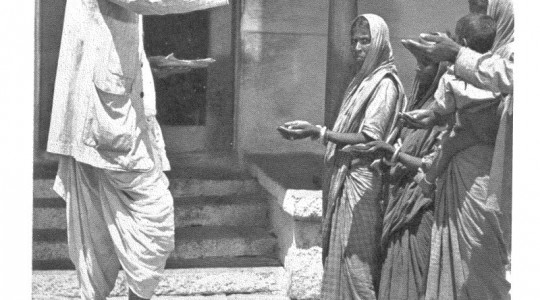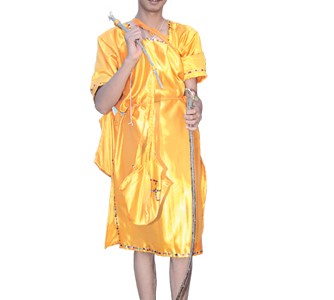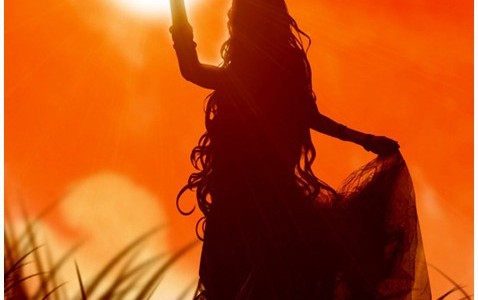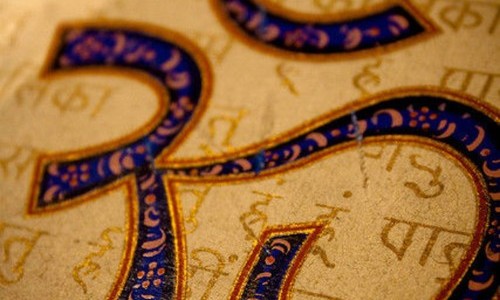- 11 years ago
-
Let us first consider the view that according to the Vedas themselves caste is not based on birth. (After all, the Vedas are the source of our religion. So it is essential to be clear on this point.) Earlier I sought to counter the view that there was Vedic sanction for post-puberty marriages. The present contention about what the Vedas say about caste is similar, being based on a passage read out of context. What is mentioned as an exception to the rule is being interpreted as a rule itself. I will give firm proof in support of the view that caste is based on birth and not on the nature or quality of individuals. The caula of children belonging to particular caste is performed at the age of three, the upanayana at five or seven. These are samskaras based on birth and performed in childhood. So it would be absurd to claim that one’s vocation is based on one’s nature of qualities. Is it possible to determine one’s qualities or nature in early childhood? Let us now come to Gita. It is true that the Gita speaks of “samadarsana”, “seeing the selfsame thing in everything and everybody. But it would be perverse to argue on this basis that the Gita does not recognise any caste distinctions. When, according to Krsna, do we attain the stage of samatva, the stage when we will look upon all as equal? We must consider the context: The Lord speaks of the samadarsana of the wise man who is absorbed in the Atman and for whom there exists nothing [other than the Atman] including creation – and even the fact that Isvara is the creator is of no consequence to him. The Lord says that all are equal for a man when he renounces karma entirely to become an ascetic and attains the final state of enlightenment. The Vedas and the Upanisads say the same thing. Only an individual belonging to the highest plane can see all things as One [as one Reality]. Samadarsana is not of this phenomenal world of plurality nor is it for us who are engaged in works. The Lord speaks in the Gita of samadarsana, samacitta and samabhuddhi from the yogin’s point of view, but by no means does he refer to “samakaryatva” as applied to our worldly existence. Some concede that Bhagavan does not deny caste differences, but however argue that, according to the Lord, caste is not based on birth but on the individual qualities of people. In support they quote this line from the Gita. “Caturvarnyam mayasrstam guna-karma-vibagasah”. When do we come to know the qualities that distinguish an individual? At what age does he reveal his nature? How are we to determine this and impart him the education and training necessary for the vocation that will be in keeping with his qualities? Take, for instance, the calling of the Brahmin who has to join the gurukula when he is seven or eight years old. His education covers a period of twelve years; after this alone will he be qualified for his vocation which includes, among other things, teaching. If a man’s occupation were to be fixed until after his character and qualities are formed, it would mean a waste of his youthful years. Even if he were to learn a job or trade thus at a late age it would mean a loss not only to himself but also to society. The Lord speaks again and again that we must be constantly engaged in work and that we must not remain idle even a moment. How then would he approve of an arrangement in which every individual has to be without any work until his vocation is determined according to his character? Does this mean that the Lord lends his support in theory alone to the system of vocations according to the differing qualities of people and that in actual practice he wants occupations to be based on birth? But he is not like a politician [of these days] speaking one thing and doing something entirely different. What do we see in Krsna’s own life as a divine incarnation? When Arjuna refuses to fight saying that it is better to become a mendicant than spill the blood of friends and relatives even if it be to rule over an empire, what does the Lord tell him? He urges Arjuna to fight. “You are born a Ksatriya and you are duty-bound to wage war. Take up your bow and fight”. Here too it may be argued thus: “Arjuna was a great warrior and a great hero. His reluctance to take up arms against friends and relatives must have been a momentary affair. His inner quality and temperament were that of a man of valour. So the Lord enthuses him to go to war. What he refers to as Arjuna’s svadharma (own duty) cannot be the same as his jati dharma (caste duty). The Lord must be referring to Arjuna’s natural character as his svadharma. ” If such an argument is correct, what about the character of Dharmaputra (Yudhisthra)? From the very beginning he is averse to war and anxious to make peace with the Kauravas. Does he not go so far as to say that he would not insist on half the kingdom but he would be satisfied with just five houses? Krsna goes to the Kauravas as his envoy [of peace] but is himself dragged into war by them. Earlier he encouraged Yudhisthra to subjugate all his neighbouring kingdoms to become an imperial ruler and perform the rajasuya. Does Dharmaputra desire such glory? His inner character and temperament show that he is not warlike by nature nor do they suggest that he desires the status of a mighty imperial ruler. Sri Krsna Paramatman makes such a man practice his dharma of a Ksatriya. All this shows that by svadharma it is jati dharma that the Lord means. Men like Dronacarya were born Brahmins but they took up the duty of Ksatriyas. Bhagavan does not deprecate them since they were otherwise great men, but all the same he does not show any displeasure when Bhima taunts Dronacarya for having forsaken the dharma of his birth. Thus we have confirmation that by svadharma the Lord means the jati dharma of birth. Then, why does he use the phrase “guna-karma-vibhagasah” in the Gita?
Author archives: Admin
- 11 years ago
-
The celibate-student must perform samidadhana every day, beg for his food and take no salt. If he is a Brahmin he must keep a staff (danda) or palasa, if he is a ksatriya a staff of asvattha. The Vaisya brahmacarin has a staff of udumbara. The staff helps the student to retain his learning. It is similar to the lightening conductor or the aerial and is scientifically valid as to “fix” these hymns. That is why it should be kept-to safeguard the treasure called the Vedas that the student has acquired. The brahmacarin must wear the skin of the black antelope (krsnajina) and must not wear any upper cloth. There are rules the electrician has to observe for his safety: he must stand on a rubber plank or wear rubber gloves during work. Similarly there are rules prescribed by our great men of the past to protect the Atmic electricity, the Atmic energy. Today we perform upakarma as a one-day ceremony without keeping up the study of the Vedas. We do not go through the utsarjana at all. For our failure to do it we mutter a mantra in expiation, the mantra called “Kamokarsit”which says, “I did not sin. Kama (desire) did it. Anger did it. . . “There is no need to repeat this mantra if we perform the utsarjana. Brahmacarya implies adherence to a number of rules with regard to food, the performance of rites and the observance of vratas. If a brahmacarin makes any mistake in chanting the Vedas, in matter of tone or enunciation, he must do penance for the same on upakarma day. On this occasion he eats no more than a few sesame seeds; otherwise he fasts the whole day; and on the following day he offers 1,008 sticks of the palasa in the sacred fire chanting the Gayatri. He should do this every year. Nowadays brahmacarins perform this rite only on the day following the first upakarma following the upanayana. Actually this a rite all Brahmins are expected to perform, though we find today householders doing only Gayatri-japa. When you merely mutter the mantra you feel sleepy and you may go wrong in the japa. But such will not be the case if you also perform a homa as you chant the Gayatri. Sticks offered in the fire must be those of palasa, if not of the asvattha; darbha grass may be used if the other two are not available. At mealtime the student can have his fill. The only restriction is that he must not give free rein to his appetite. He must beg for his food for such a practice makes him humble. The sastras do not require him to fast. The student must be nourished properly during his growing years. But he must, at the same time, learn to develop sattvic qualities and there must be nothing rude or rough about him. It is by serving his guru that these qualities are inculcated in him. During the twelve years in the gurukula the student must learn his recension of the Vedas and also the caturdasavidya. On completion of his stay in the gurukula he performs the samavartana, returns home and marries.
- 11 years ago
-
“Whoever sings is protected,” that is “Gayatri”. “Gayantam trayate yasmat Gayatrityabhidhiyate.” “Sings” is not used here in the sense of singing a song. It means intoning or chanting (the mantra) with affection and devotion. People who chant the Gayatri in this manner are protected. While speaking about this mantra the Vedas use these words: “Gayatrim Chandasam mata”. “Chandas” means the Vedas. So Gayatri is the mother of all Vedic mantras (that is the Vedas proclaim them so). It has twenty-four aksaras (letters or syllables) and three feet, each foot of eight syllables. That is why the mantra is called “Tripada Gayatri”. Each foot is the essence of a Veda. Thus Gayatri is the essence of Rgveda, Yajurveda and Samaveda. The Atharvaveda has its own Gayatri. To receive instruction in it you must have a second upanayana. Says the Manusmriti: “Tribhya eva tu Vedebyhah padam padamaduduham”. It means that each pada of Gayatri is taken from one of the (three) Vedas. We have forsaken all else that is Vedic. What will be our fate if we give up the Gayatri mantra also? Gayatri-japa is essential to all rites performed according to the sastras. (See also chapter 12)
- 11 years ago
-
Dharma, artha, kama and moksa are the four purusarthas, the four aims of life. The first of them, dharma, is a lifelong objective. The pursuit of artha (material welfare) and kama (desire, love) must be given up at a certain stage in a man’s life. But so long as such a pursuit lasts, it must be based on dharma. When a man renounces the world and becomes an ascetic, he transcends dharma, but he does not go contrary to it nor speak against it. Indeed, his life is governed by the dharma of sannyasa. I have alreAdy spoken about Purvamimamsa (karmakanda) and Uttaramimamsa (jnanakanda). The Purvamimamsa-sutra opens with “Athato dharmajignasa”, meaning “starting the inquiry into Dharma”. The “Uttaramimamsa-sutra” (or Bramhasutra), on the other hand, starts with “Athato Bramhajignasa”, “meaning”starting the inquiry into the Brahman”. When you inquire into the Brahmin and meditate on it you are not conscious of the Dharma. Dharma is for the dualistic world of karma. Since the phenomenal world does not exist in non-dualistic jnana there is no consideration of dharma in it. But this does not mean that [nondualistic jnana]is contrary or opposed to dharma; and all that is meant is that it goes beyond dharma. Bhagwan declares in theGita: “Sarvadharman parityajya mam ekam saranam vraja” (Forsaking all dharmas come to me alone for refuge). Are we to construe that the Lord asks us to go to him for refuge as perpetrators of adharma? The true meaning of the words of the Lord is this: “Give up all inquiry into dharma and adharma. Go beyond them and comprehend the Object that is the source of both”. What is sought is an inward experience. The actions performed by the jnanins who have their inner realisation will naturally be in conformity with the dharma. The doings of the high-souled ascetics may not be consciously based on dharma, but, nevertheless, they would be nothing but dharmic. All told, dharma is always a part of man’s life. When he reaches a high spiritual state, he may not be conscious of it, but dharma will abide him and will keep shining as a light in all that he does. The pursuit of the second of the four aims of life, artha, must be based on dharma. The same applies to the third aim, that of kama. Kalidasa expresses the same thought in his Raghuvamsam when he speaks in praise of Dilipa: “Abhyarthakamau tasyastam dharma eva manisinah” (With Dilipa, the wise, even artha and kama were of the nature of dharma). The householder’s stage of life commences with marriage. In it both material wellbeing and desire have their source in dharma. The student-bachelor and the ascetic are not concerned with the acquisition of wealth or carnal pleasure. The householder’s stage of life, or, grhasthasrama, is a bridge between the two and in it both are permitted [within the bounds of dharma] A man needs money and material goods to live in this world. As for kama or carnal desire, it is needed so that children may be born according to their past karma. Until we have lived out our karma we too will have to be in this world. In this way if we want to give a “chance” to others, we have to earn money and experience kama so that they [these others] may be born again. We need householders to feed sannyasins who have given up karma. It would not be practical for all people in this world to become ascetics. The sastras extol householders as the backbone of the society since they live, or are expected to live, according to the dictates of the dharma and fulfil the requirements of student-bachelors and ascetics. After completing one’s student-bachelorhood and acquiring learning and good qualities, one must marry so as to perform religious rites and live a life guided by dharma. Marriage is included among the forty samskaras, which fact shows that it is a sacred rite that sanctifies life. Just as upanayana is preliminary (purvanga) to the student-bachelor’s stage of life, marriage is preliminary to that of the householder. Its purpose is disciplining the senses and the basis for the performance of various duties. The householder’s life is not to be taken to mean merely the enjoyment of sensual pleasure along with the carrying out of duties that mean good to the world. The fact is that the sastras have formulated this stage of life in such a way as to make kama itself instinct with dharma. “Dharma” means essentially bringing everything within certain limits, under a certain discipline and decorum. Kama must be inspired by dharma, that is one must bridle one’s passions in one’s conjugal life, so that, step by step, the carnal urge will lose its keenness and eventually one will gain mellowness to graduate to sannyasa. That stage, though, comes later. But at first, even now, in the householder’s stage of life, the passions have to be curbed, little by little, but not forcibly. In the gurukula the celibatestudent is brought under strict discipline. That saves him from being swept away by animal passion. Though we talk of animal passion, we must note that animals mate only during a particular season. They have the sexual urge only when the female of the species is ready for pregnancy. Man is baser in such matters. Brahmacarya helps to control the carnal urge as it first shows up. Then, in the householder’s life, since kama is made subservient to dharma, the passions are kept under check. What is the sastric method to control the carnal urge? From the day of a women’s period there should be no intercourse for four days. Then it is permitted for twelve days. Again there should be no intercourse until the women has her next period. Even during the twelve days mentioned above the couple should not meet during the new moon, on days conjoined by certain asterisms, etc., If such rules are followed the couple will remain healthy mentally as well as physically.
